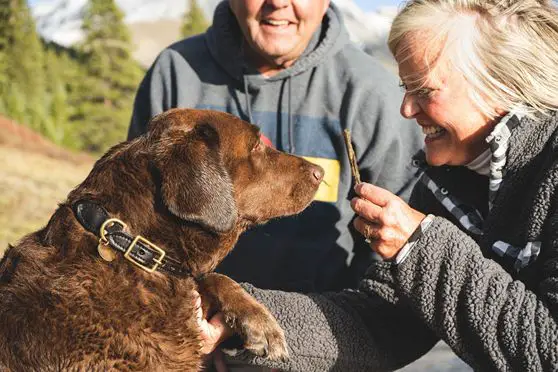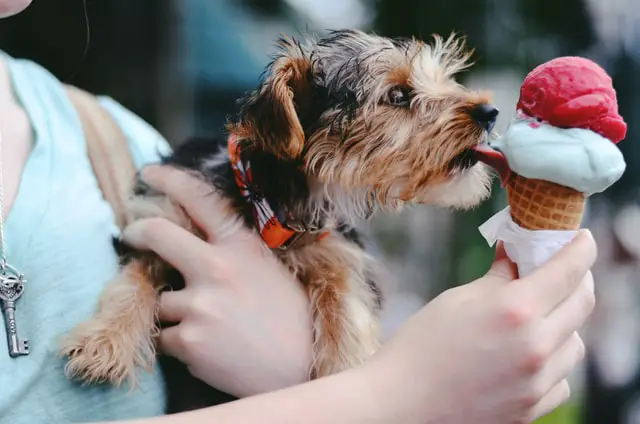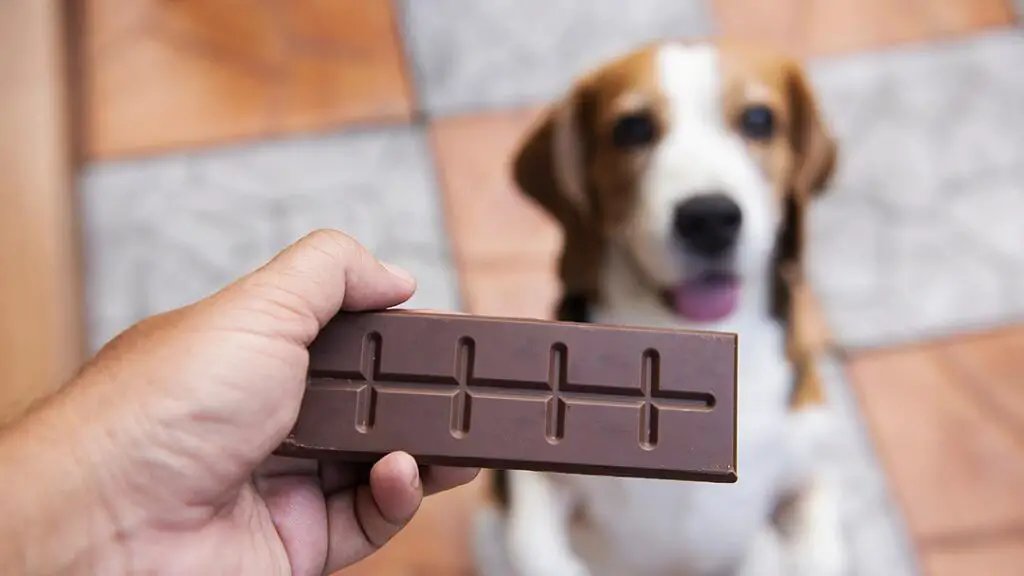Chocolate is truly a classic favorite — it is sweet, creamy, flavorful, and irresistible. It makes you happy and picks up your mood in an instant. It is widely consumed by children and adults alike, but is it also safe for pets? Is there such a thing as chocolates for dogs?
Unfortunately, there is not.
Just days ahead of World Chocolate Day in July, Narla, a then-7-month-old German shepherd, had to fight for her life after ingesting almost half a kilogram of dark chocolate with raisins — a dose considered extremely deadly for dogs. According to a report by Wales Online, the incident happened after Narla managed to jump over the safety gate from the kitchen and into the living room where the treats were lying around. Fortunately, her owners promptly responded and vets were able to save her life just in time. Doctors had to administer intravenous treatment to get rid of the toxins in her body and provide relief as she was monitored for two nights.

Narla’s owners Victoria Day and Joseph Turpin have a word of warning to other dog owners: always be mindful of where you store chocolates or any other treat that has it in them. “We want to tell Narla’s story to stop other people going through the same horrific ordeal,” Victoria said in the report.
Giving chocolates to dogs is a topic that has long been talked about in the pet community — and rightfully so. Numerous studies show that it can be extremely lethal for dogs to ingest chocolate, even in small amounts. But what exactly is the science behind it? We’ll explain in the guide below.

WHAT CAUSES CHOCOLATE POISONING IN DOGS?
Chocolate is made from the seeds of Theobroma cacao. In the Merck Veterinary Manual, Gwaltney-Brant (2013) states that what makes chocolates fatal for dogs are mainly “methylxanthines theobromine (3,7-dimethylxanthine) and caffeine (1,3,7-trimethylxanthine)”. Our human bodies can process theobromine faster, but dogs can’t. It is first metabolized in their livers, recirculates, then stays in their bodies for up to 18 hours before it is excreted through their urine.
Just how much chocolate is deadly for dogs? Chocolate’s toxicity to dogs actually depends on the type and amount consumed. For example, milk chocolate has approximately 64 mg of theobromine per ounce, while unsweetened baker’s chocolate has around 450 mg per ounce. These amounts are generally already enough to trigger symptoms of poisoning in your dog such as vomiting, diarrhea, and in more severe cases, seizures. Even cocoa bean hulls, while seemingly harmless, have significant amounts of these toxins that could kill your dog.

HOW TO RECOGNIZE SIGNS OF CHOCOLATE POISONING
In a journal posted in the US National Library of Medicine-National Institutes of Health, the compound theobromine “affects the central nervous system, cardiovascular system, and respiratory system” (Finlay & Guiton, 2005). The first signs of poisoning appear 6-12 hours after ingestion and include, but are not limited to:
- Vomiting. Vomiting that comes with diarrhea is often two of the initial symptoms that manifest after your dog has ingested copious amounts of chocolate.
- Excessive thirst and increased urination. Theobromine and caffeine are known to have diuretic effects, so your dog may experience an increase in urine production and intense thirst that goes along with it.
- Restlessness. Caffeine can cause your dogs to pant, twitch, feel irritable, and behave erratically.
- Abnormal heart rate. A high heart rate can lead to cardiac arrest if left unaddressed, especially if you have a senior dog or a pet that has underlying health conditions.
- Haematemesis. Also known as blood vomiting, haematemesis is one of the more severe symptoms of chocolate toxicity.
- Seizures. A seizure is often an indication that your dog has ingested a big amount of chocolate and will likely lead to death if proper treatment is not immediately given.

WHAT TO DO IF YOUR DOG EATS CHOCOLATE
If you suspect that your dog has ingested chocolate, call your veterinarian immediately. In Narla’s survival story mentioned above, her owners’ quick thinking and response are what ultimately got her out of death’s reach. “It’s best to contact the vet as soon as you notice your pet’s eaten something they shouldn’t rather than waiting for symptoms, as by the time you see these signs the toxin has already passed into the body,” Dr. Robert Haselgrove, senior vet assigned to Narla’s case, recommends.
The doctor may advise you to continuously monitor your dog at home, but again, you may be asked to bring your pet to the clinic depending on the severity of the symptoms. The doctor may induce vomiting and administer IV fluids and medication to alleviate the effects of poisoning. Like in Narla’s situation, it is also possible for your dog to stay in the clinic overnight or until they have stabilized.
WAYS TO PREVENT CHOCOLATE TOXICITY IN DOGS
Here are a few ways to keep your home safe for your precious dogs to ensure that they don’t get harmed from the food we may unknowingly be leaving around.
- Improve your storage. If you’re aware that you have stocks of goodies such as chocolate, brownies, or cocoa powder at home, be sure to keep them in tightly closed jars then store them in overhead shelves or in your fridge. Our dogs are always curious and will try to taste whatever food they can find — it’s our responsibility as owners to keep food that may be fatal for them out of their paws’ reach.
- Train your dog. Teach your dog basic yet essential commands such as “leave it” or “don’t touch it” so they won’t pick up or eat stuff they shouldn’t. The younger they are, the easier it is to instill obedience in them — a trait that will keep them out of danger in the long run.
- Educate your friends and family. Some of the family and friends we invite over may genuinely be unaware of the dangers of feeding chocolates and other sweets to dogs, especially kids. This is why it’s important that we educate them on the matter as much as we can and encourage them to practice good storage habits as well, what signs to look for should a dog suffer from chocolate poisoning, and who to contact in case it happens.

For us people, too much consumption of chocolate could have risks such as obesity, diabetes, and oral problems. But chocolate for dogs is also not recommended as it is very dangerous. So think twice before trying to feed your pet a scoop of that Nutella and pick treats that are safe for them instead. Keep chocolate tins, wrappers, and boxes out of their reach—it just might save their lives.









